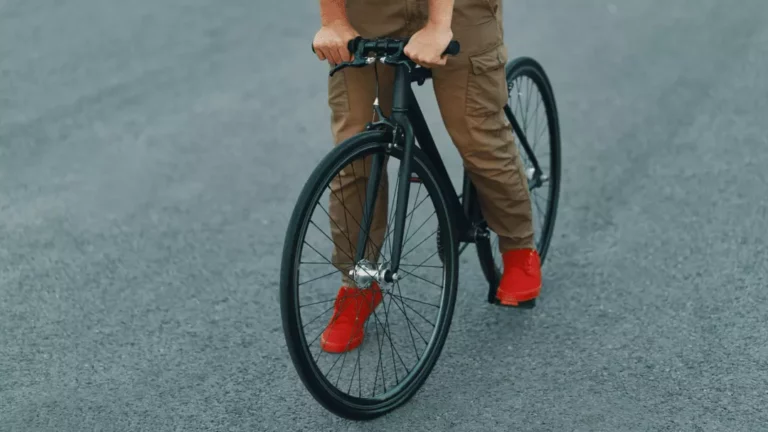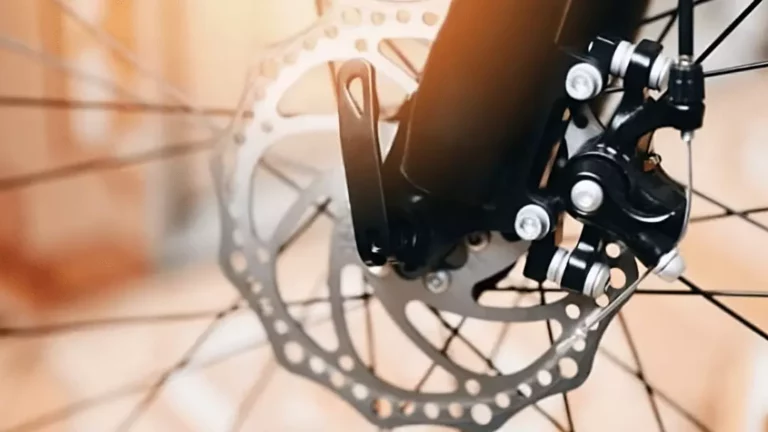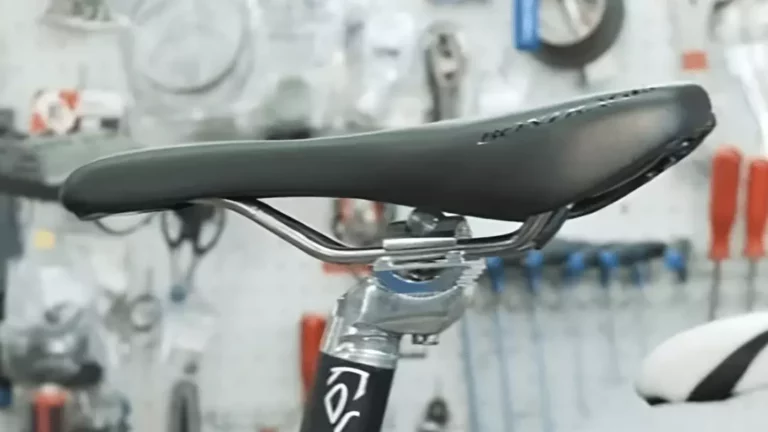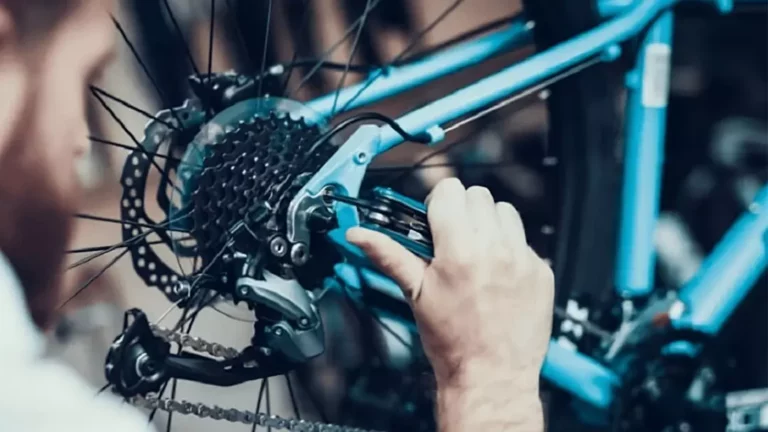How to Find Master Link on Bike Chain: Complete Guide
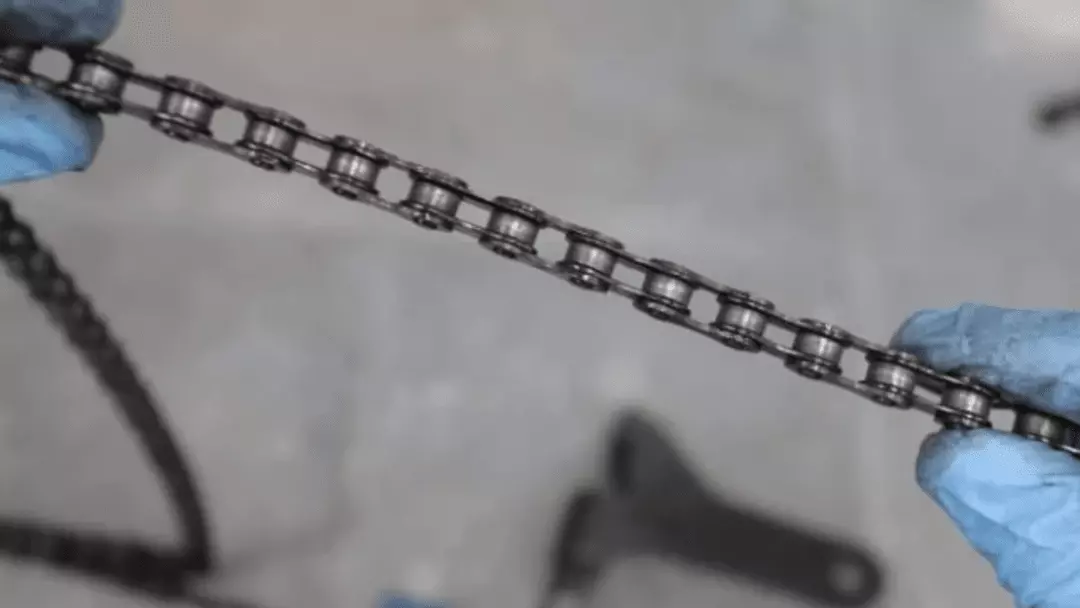
Removing your bike chain will become a lot easier if you locate the master link successfully. But what is the master link, and how to find master link on bike chain? If you’re wondering how to find the master link on bike chain, we got you covered.
We’ll discuss the most common types of links for a bike chain, the key differences between them, and how you can find the bike chain’s master link and remove it with ease.
Once you read this article, you’ll have all the necessary knowledge required to connect and disconnect the links on a bike chain like a pro. Let’s jump right in!
What Are the Common Types of Link?
There are different types of bike chain links available in the market. But the three most common types of links available in the market for a bike chain are regular links, master links/quick links, and split links.
Regular Link
Regular links are the hardest to break. You’ll need a special tool to break a bike chain that has a regular link. You need to use a chain tool to push the rivet from the center of the chain link.
You can choose any chain link when you’re working with a regular link because all of them have the same structure.
This chain’s rivet style is also the same in these types of links. Place the bicycle chain in the chain tool and make sure that it’s seated nicely and firmly.
The pin of the chain breaker tool should apply pressure to the center of the rivet. Make sure you’re not bending the link, and start twisting the chain tool with a firm grip. Make sure the chain tool aligns correctly with the bike chain.
Apply some force to the chain tool and move the rod forward to push the rivet to the back of the chain. You’ll start to see the rivet getting out through the back. Don’t push it all the way out, but push it out most of the way.
The reason you don’t want to push the pin all the way out is that you’ll be able to reconnect it easily if the pin stays there. Take the chain breaker tool out once the rivet is almost fully out but not out yet. You’ll be able to pull off the plate easily and remove the link.
Breaking a chain without master links is much more difficult as you’ll need special tools for that. And that is exactly the case with these regular links.
Master Link
It’s easiest to connect and disconnect bike chains with master links. We’ll cover everything you need to know about the bike chain master link in the corresponding section of this article.
Split Link
Split links are also quite easy to take apart. It’s also called a spring clip link. If you have a set of needle-nose pliers, you’ll be able to take them off with ease. Place one of the jaws on the pin and the other on the locking faceplate.
The faceplate will start to slide out if you squeeze it a little bit. Once the locking plate is removed, you can use your fingers to slide off the other faceplate.
What is Master Link?
A bike chain master link is often referred to as a “quick link” or “quick release link.” It’s a set that is made of two outer plates.
Each of the plates looks like the outer plate of the chain. The chain’s outer plates join the two sets of the chain’s inner plate ends.
The biggest advantage of a master link or a quick-release link is that you can easily connect or disconnect a chain without any chain tool. It joins the two sets of the inner links of the chain.
What Is the Purpose of the Master Link?
The bike chain’s master link has one job: to connect and disconnect easily. You can do this job with your bare hands. You can get basic tools like pliers to remove the link as well, but master links give you the ability to open a chain without a chain tool.
How Do You Know If the Chain Has a Master Link?
The easiest way to know if the chain is joined by a master link is to look for it. You can visually inspect the chain, and the answer will be clear.
The pins will be next to the holes on opposing sites in case of a master link. Remember that not all bikes have master links or master rivets. You probably don’t have a master link if your bike has a rear derailleur.
Your chances of finding it are best if you own BMX bikes, single-speed bikes, or three-speed town bikes that have internal gears. Shimano chains used to have special release pins. These special easy-release pins are getting less common.
Another way to tell if the bike chain has master links is to look at the rear cassette. A bike that has more sprockets will have a narrower chain and, therefore, less room for the master link in the chain.
Yet another way to tell if your bike has a master link is to measure it. Measure the gaps between the holes in the links of your chain. If it’s 1/8th of an inch or bigger, you most likely have a master link.
How to Find Master Link on Bike Chain?
Finding the master link is an easy job. Place your bike in a bike work stand and stand on the drivetrain side. You need to get a good look at the area where the chain is located.
Then, slowly turn the pedals and be on the lookout for a link that is wider than the other links. If you can locate the extra-wide link, you have found the master link. There is only one link that will stand out from the rest.
Before you remove the master link, make sure that you’ve found the right link. Double-check this process if necessary to find the master link.
How to Remove a Bicycle Chain with a Master Link?
A lot of people are intimidated by this process, but there’s nothing to worry about if you know what you’re doing. If you look at the master rivet, you’ll find pins that are easy to release or a spring clip.
Usually, you will find a pin release. This type of master link is very easy to work with. The clip will be shaped like a long horseshoe in this case.
You can use chain pliers to bend the link open and remove the piece that looks like a horseshoe by compressing the pins together. The piece will come off.
Bend the chain pin where the master rivet is located if you have a link with a pin release. It should feel like you’re trying to bend the link into a U shape.
The chain pin will cause the clip to come loose when you do this. After that, you’ll be able to take it apart with ease.
The pin pops right out if you know what you’re doing and apply the pressure correctly. Use a new pin when you reconnect the master link on your bike’s chain.
It may seem complicated at first, but the more times you do this, the easier it gets. If you’re afraid to practice on a new chain, ask anyone from your local bike store if they have any old chains lying around. You can borrow a bike chain from them and work on that instead.
How to Shorten a Chain with a Master Link?
Shortening a chain is also very easy with a master link. Store the master link in a safe area once you remove it. It’s wise to place the loose connection with the clamp so that you have a proper idea of where you want to work.
Reach for the pin and gently pull the pin with the pliers. Some pins are harder to remove than others. It’s important to be careful while doing this to avoid breaking the chain.
Once the pin is out, you can take a screwdriver and reconnect the master link. The master rivet will make a clicking sound when you put it in place correctly. Your bike chain is now shortened successfully.
Related Article: Why does my bicycle chain keep clicking
How to Tell If the Chain Is too Tight or too Loose?
The bike will slow down after a few turns if the chain is too tight. You can test if your chain is tight or loose by flipping the bike upside down.
Start spinning the bike tire slowly. If it slows down, that means the chain is too tight. If you’re able to push the chain sideways when the wheel is spinning, that means it’s too loose. You want something in the middle of these two extremes.
How Can You Measure Chain Link?
The correct way to measure the length of a chain link is to measure the distance between the center of one pin to the center of the adjacent pin. Measuring the gap between the link plates is also an effective way to measure the master chain link.
If you measure the inside and outside of the roller chain, you’ll be able to determine the thickness and the side plate height as well. Doing this will make sure that you get a good average size, and it’ll increase your accuracy.
Is a Master Link Reusable?
While most manufacturers suggest that you can only use a master link once, you can use it again if there’s no visible wear and tear on it.
If you use the master link of the correct size and disconnect it without damaging it, you can reuse it without any worry.
The type and manufacturer of the master link also have an impact on whether you can reuse the master link or not.
The master links that are commonly available for 8- and 9-speed chains are often reusable. The question is if you should; you are reusing a damaged link, so the chain may not be quite as strong as before.
But the 10-speed and 11-speed are generally not reusable. If you’re unsure about whether it’s safe to reuse your master link or not, consult a local bike shop.
When the bike chain starts to be damaged, you can see it by looking at the chain pins. There will be signs of abrasion. It’s common for chains to get worn out with time.
Related Article: 10-speed chain on 11-speed cassette
When Should You Change Your Bike Chain?
The right time to change the bike chain depends on the rider. That’s because no two riders treat the bike the same way.
A good starting point to change the bike chain is after 2000 miles. But if you see any visible wear and tear on the chain before that, you should change the bike chain.
Final Words
Master links are available in many modern bikes, making it very easy to join and take apart chains. They come in all different shapes and sizes. It’s easy to work with them if we know what we’re doing.
Proper maintenance of your bike chain is necessary as it drives power around the bicycle. It shifts the power from the pedals to the gears and moves the bike forward.
Things like mud, dirt, and salt spray wear down the chain and stretch it. At some point, you may need to detach your bike chain – and master links make it easy! Now you, too, know how to find master link on bike chain that have it.

Steve Beck is a passionate cyclist and experienced writer covering the cycling industry for over a decade. He has a wealth of knowledge and expertise in all bike-related things, from the latest products and technologies to the best routes and trails. His articles are well-researched, informative, and engaging, and he has a talent for explaining complex cycling concepts in a way that is easy to understand. Steve can be found on the road when he’s not writing about bikes, putting his knowledge and skills to the test.

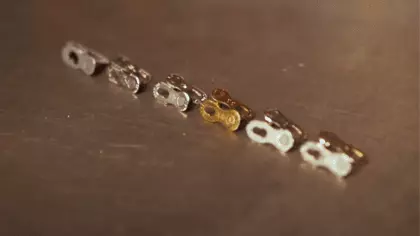
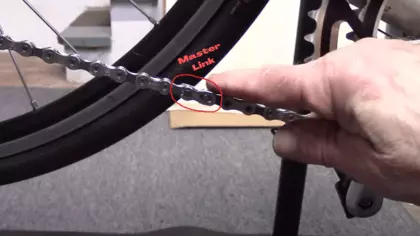
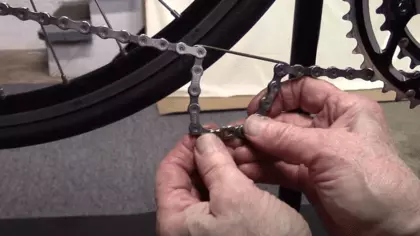
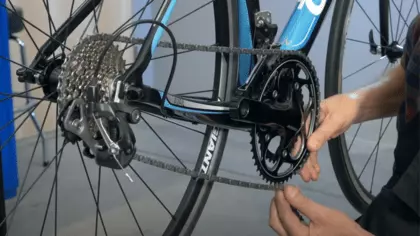
![Are Haro Bikes Good? – [A Complete Guide]](https://bikesmarts.com/wp-content/uploads/2022/12/are-haro-bikes-good-768x432.webp)
